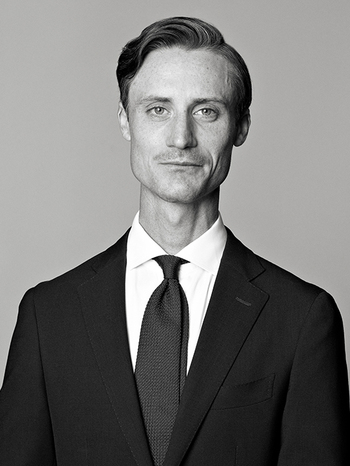Important Spring Sale presents an important work by Newton Souza
Portrait of a man
Francis Newton Souza was born in 1924 in the Portuguese colony of Goa, India. As a child, he moved with his mother from Goa to Bombay, where he grew up in a Catholic environment and attended a school run by Jesuit priests, where he encountered the religious iconography that would become a significant part of his artistic vocabulary. Souza was rebellious as a young man and was expelled from school at the age of 15 when he was caught drawing pornographic images in the school's toilets. Later, he enrolled at the J.J School of Art in Bombay but was also suspended there when he and 21 other students joined Gandhi's "Quit India Movement." After these setbacks, Souza chose not to return to his art studies but continued to explore his artistic path independently.
In 1947, Souza, along with other avant-garde artists, founded the Progressive Artists Group (PAG). The group aimed to combine India's classical culture with innovative Western techniques and styles in their creations. The group played a crucial role in the development of modern art in India. In 1949, Souza left India for London in hopes of encountering a more liberal art audience. However, post-war London was not what he had hoped for, and Souza's first years there were difficult. A few years later, in 1955, things turned around, and Souza exhibited three works at the newly opened Institute of Contemporary Arts alongside artists like Francis Bacon and Henry Moore. That same year, he also had his first solo exhibition at Victor Musgrave's Gallery One. The exhibition was a great success for Souza, establishing him as one of the most interesting artists on the London art scene.
Souza was often provocative and controversial in his choice of subjects, exploring themes such as eroticism, religion (especially Catholicism), and the dichotomy of good and evil. Throughout his long career, he experimented with a range of styles and expressions, but he is most appreciated for his powerful, figurative paintings characterized by bold black lines executed in London during the 1950s and 60s. Souza's intense and emotional portraits capture the essence of the subject in a raw and unfiltered manner that leaves few viewers untouched. His portraits are not merely representations of physical likeness but rather expressions of inner emotions and psychological states. By using exaggerated features and intense brushstrokes, Souza could convey a sense of intensity and depth in his portraits, creating a connection between the viewer and the subject. His portraits often revealed the inner turmoil and complexity of the human experience, making them both captivating and thought-provoking. Overall, Souza's portraits are a testament to his artistic vision and his ability to capture the essence of his subjects in a truly impactful way. Souza's time in London, during which the painting for auction was executed, is widely considered the pinnacle of his career, as it was when he was most driven and had the opportunity to produce works on a larger scale. Throughout his life, Souza became one of India's most influential modern artists.
The work is presented at Modern and Contemporary South Asian Art, Bonhams, New Bond Street, London from 2-4 June, at Bukowskis Important Spring Sale, Stockholm from the 5th of June.
Estimate 1 500 000 - 2 000 000 SEK
To the work

› Signed Souza and dated 1956. Panel 99 x 61 cm.
Important Spring Sale
Viewing June 5 – 10, Berzelii Park 1, Stockholm
Open weekdays 11 am – 6 pm, weekends 11 am – 4 pm
Live auction June 11 – 13, Arsenalsgatan 2, Stockholm
Read more about the auction and discover the full catalogue
Requests & condition reports Contact specialist

Tukholma
Andreas Rydén
Varatoimitusjohtaja, Johtava asiantuntija, taide
+46 (0)728 58 71 39

Tukholma
Lena Rydén
Johtava taideasiantuntija, moderni- ja 1800-luvun taide
+46 (0)707 78 35 71

Tukholma
Amanda Wahrgren
Asiantuntija, moderni taite ja grafiikka
+46 (0)702 53 14 89

Tukholma
Mark Sjöberg
Asiantuntija taide & taidegrafiikka
+46 (0) 707 88 84 72





























